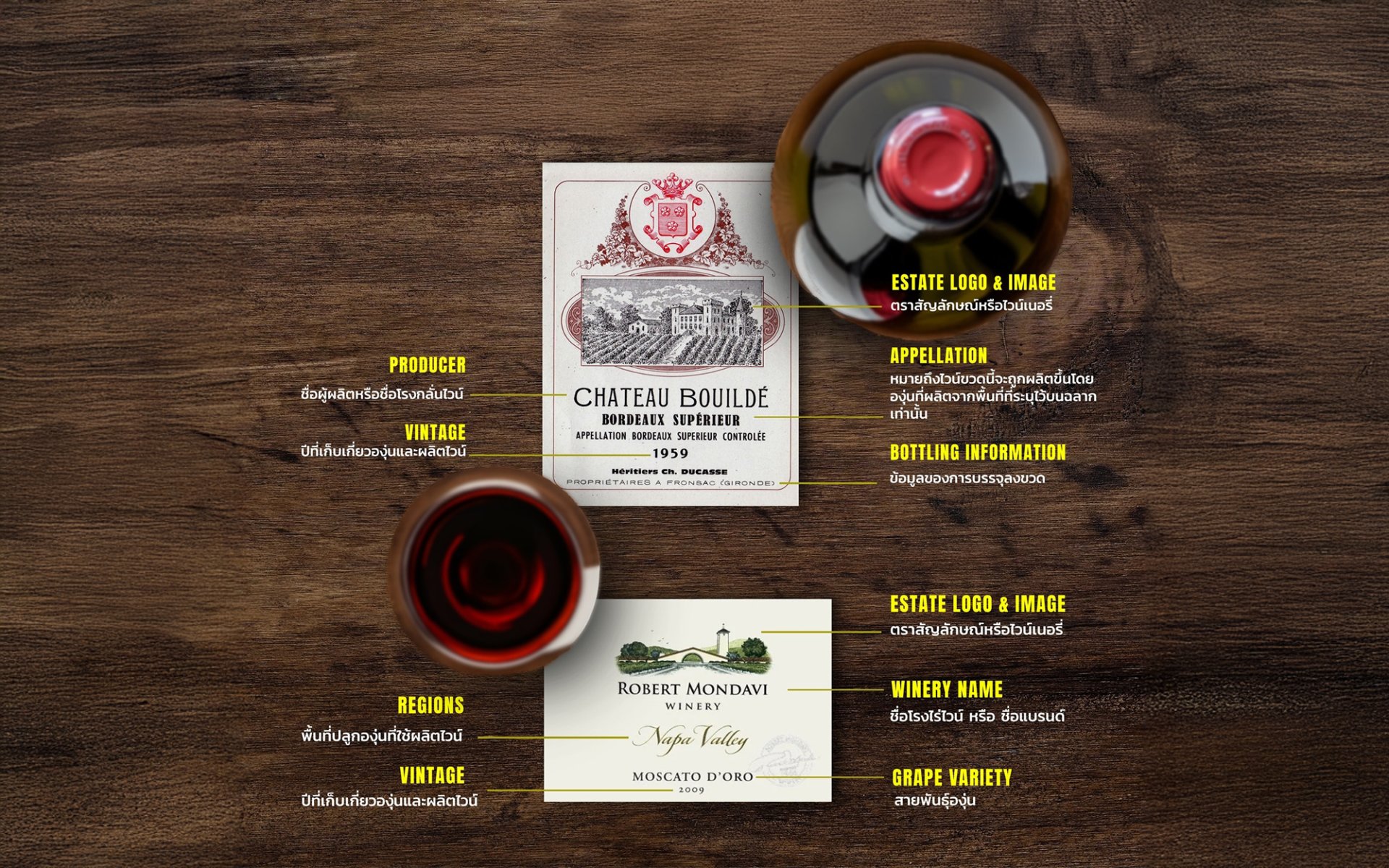Decoding Wine Labels : "Old World Wines" and "New World Wines"

For wine newcomers, deciphering a wine label can seem daunting. However, once you grasp the basic principles, choosing a wine that perfectly suits your taste becomes much simpler. Wine labels are broadly categorized into two main types based on their origin: Old World Wines and New World Wines. Today, Rimping Supermarket will guide you through a detailed understanding of the differences between these two wine label styles.
Old World vs. New World Wines: A Distinction of Origin
The terms "Old World Wines" and "New World Wines" are used to classify wines based on their geographical production region:
- Old World Wines: Refer to wines that originated and are produced in Europe, the traditional birthplace of winemaking with centuries of history. Key producing countries include France, Italy, Spain, Germany, Portugal, Austria, and Hungary.
- New World Wines: Refer to wines produced outside of Europe. This category encompasses regions where winemaking developed later, often by planting European grape varieties in new territories. Significant producing countries include the United States, Australia, New Zealand, Chile, and South Africa.
Deciphering "Old World Wines" Labels
Old World wines boast a long-standing history deeply rooted in European culture. Their labels tend to be more complex than those of New World wines, primarily focusing on the wine's origin or provenance rather than the grape varietal. This is because in Europe, there's a strong belief that the Terroir (soil and climate) of a specific region influences the wine's flavor and character more significantly than the grape variety used. Additionally, Old World wine labels often maintain a classic and understated aesthetic.
What you'll typically find on an Old World wine label includes:
- Appellation (Geographical Name): This is often the most crucial piece of information, indicating the specific region or area where the grapes were grown and the wine was produced, such as Bordeaux (France), Chianti (Italy), or Rioja (Spain). These names implicitly communicate the wine's style without needing to specify the grape varietal.
- Classification: Each European country often has its own system for classifying wine quality, denoting its standard and prestige. For example:
- In France: The "AOC" (Appellation d'Origine Contrôlée) or Grand Cru system.
- In Italy: The "DOC" (Denominazione di Origine Controllata) or "DOCG" (Denominazione di Origine Controllata e Garantita) systems. These systems certify that the wine meets stringent quality regulations.
- Vintage (Year of Grape Harvest): Indicates the year the grapes were harvested. Since weather conditions vary annually, the vintage significantly impacts the wine's flavor and quality.
Grape Varieties: Often not explicitly highlighted or may not be listed at all. For instance, a Bordeaux wine will simply be labeled "Bordeaux" without specifying Cabernet Sauvignon or Merlot, as wine drinkers typically know that Bordeaux wines are primarily made from these two varietals. - Producers Name (Winery Name): The name of the producer or vineyard is often listed on the label, especially for top-tier wines or "Châteaux" (in France), as the producer's reputation can indicate the wine's quality.
- Bottling Information: Details where the wine was bottled, e.g., "Mis en Bouteille au Château" (bottled at the estate).
- Alcohol Content (ABV): The Alcohol by Volume percentage is typically stated on Old World wine labels.
Example Old World Wine Label:
- Appellation: Bordeaux AOC
- Producer: Château Margaux
- Vintage: 2016
- Additional Information: Premier Grand Cru Classé
Deciphering "New World Wines" Labels
New World wines emerged later than Old World wines but have experienced rapid growth and widespread popularity. Their labels tend to be more straightforward and easier to understand, with a primary focus on the grape varietal and the winemaker's style. This makes them more accessible for those new to wine. Additionally, New World wine labels often feature modern designs and appealing colors.
What you'll typically find on a New World wine label includes:
- Grape Variety: This information is prominent and clearly stated, such as Cabernet Sauvignon, Chardonnay, or Pinot Noir. New World winemakers believe that the grape varietal is the main factor determining a wine's taste and characteristics.
- Regions: New World wines also indicate the production region, but usually only well-known and globally recognized regions. For example, a wine from California's Napa Valley would specifically state "Napa Valley."
Brand or Winery Name: New World wines often place significant emphasis on the brand and winery name. A label stating "Robert Mondavi Winery" immediately tells consumers who produced the wine and where it originated, building brand recognition and loyalty.
Vintage (Year of Production): Similar to Old World wines, New World wine labels usually include the production year. However, some New World wines may not emphasize the vintage as much as Old World wines, particularly those aiming for consistent flavor profiles across vintages.
In addition to the above, New World wine labels may include further information, such as overall wine flavor profiles, food pairing suggestions, or even winemaking techniques, providing more details to consumers.
Example New World Wine Label:
- Grape Variety: Cabernet Sauvignon
- Producer: Robert Mondavi Winery
- Vintage: 2018
- Region: Napa Valley


